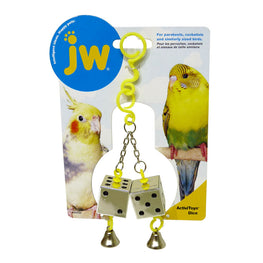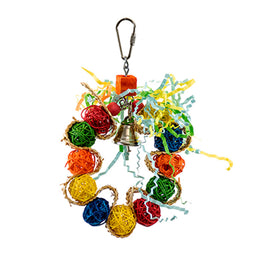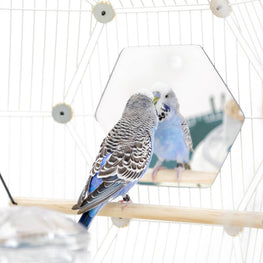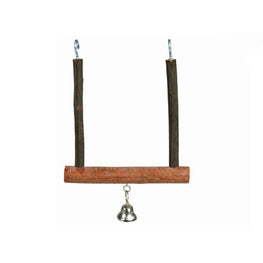Choosing a Budgie
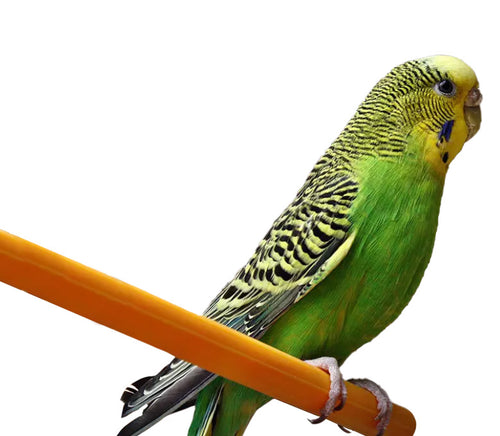
As with any pet, you need to do your research before buying. The first investigations are more to do with you than the bird itself. Why do you want a budgie? Who will look after it, feed and clean it, talk to it? Have you kept a pet bird before? Do you have a suitable location for it, away from direct sunlight, draughts and steamy kitchens?
Once you’ve sorted this out, you can start thinking about the budgie itself. Read up on budgies and if you can, talk to other owners or breeders first. Building up a bit of expertise before choosing your pet will certainly help you choose.
When making your choice, don’t be dazzled by colour. It’s all too easy to find one particular budgie more attractive than the others based on its plumage, but there are more important things to consider, including age, personality and gender. A bird with the ‘perfect plumage’ who happens to be old, shy and female, isn’t going to be that extrovert, talkative, adaptable bird you were hoping for.
Young Birds
Choosing a Baby Budgie
If you’re buying from a breeder you may have to wait for the budgies to be old enough to live away from their parents. They are weaned and sufficiently independent between 8 and 10 weeks after hatching. A young bird will have horizontal bar-markings across its entire head, including the crown (the forehead area). The frontal stripes disappear when the budgie moults for the first time, after three to four months. So, any bird without these bars will be older than 12 weeks.
There are a number of things to look out for if you want to take home a budgie that will be both happy and healthy:
- Check out the bird’s previous home. Most breeders keep their birds in good environments, but not all. If the cages seem dirty, overcrowded, and lacking in sufficient food, water and toys, you would do well to shop elsewhere. The same rule applies to pet shops or any bird you source online – unfortunately, a budgie that has a bad start in life may not thrive as well as a healthy, happy one.
- Ask the seller questions. Whether they’re a breeder or a member of staff in a shop, the person selling you the budgie should know a lot about the bird. If they don’t, how can you trust that their budgies have been well looked after? You could argue that there is a duty to ‘rescue’ birds that have not been given the best start in life; but ill health in a bird will commonly lead to its death. Furthermore, your purchase will help keep the dealer in business, and in the long term that’s not a good thing.
- Ask for a written guarantee of health for your new bird. Many places will offer this as a matter of course. It should enable you to return the budgie and get a refund should the vet discover any existing health problem in the young bird.
Choose a young bird that looks healthy. Things to look out for include:
A young bird will have horizontal bar-markings across its entire head, including the crown.

- Sociable behaviour. Healthy young budgies will be noisy, playful and alert. A quiet bird perched alone in a cage containing other birds will be ailing. It might be harder to make a judgement if the bird happens to be alone in a cage, (although this is seldom the case in shops and breeders’ aviaries), but you’ll still be able to tell a lethargic, ailing bird from an alert, healthy one.
- Beautiful plumage. There should be no missing or messy feathers, and the bird should look sleek and shiny. Some breeders may clip primary feathers on the young budgies’ wings, so check if this is the case. It won’t do the bird any harm, and the feathers will grow back, but to the untrained eye it may look ‘wrong’.
- Quiet breathing. Budgies are musical chatterboxes, but the noise shouldn’t extend to their breathing. Listen to the budgie when it’s not vocalising – if there is a ‘wheeze’ or a ‘clicking’ sound, it might indicate respiratory problems, possibly air sac mite.
- Clean nostrils and beak. The nostrils should be clear, with no mucous or dried matter clogging them or stuck to the beak. If any nasty stuff is present, it means the bird has a respiratory problem, which is a common cause of death in budgies. It’s contagious too, so any bird sharing the same space may be infected. (This condition is not to be confused with the swollen, scaly cere of a hen budgie with eggs - she’s supposed to look like that!)
- A well-proportioned beak. If it’s crooked, rough looking or oversized, there are hidden health problems.
- The right number of toes. There should be four on each foot, two pointing forwards and two pointing backwards (a formation known as zygodactyl, a feature common to all parrots, and the secret of their great dexterity). Watch the bird perching and climbing – it should excel at these things, and any sign of clumsiness or awkwardness could indicate a deformity or problem. Also, if the legs in general look swollen or more scaly than other budgies you have seen, it might indicate disease.
- A clean vent (the vent, or cloaca, is the area from which the bird deposits its droppings). If it looks messy down below, it might be an indication of a health problem, or a poor diet which has weakened the bird.
Choosing a Budgie That is More Likely to Talk

Finger-trained budgies will talk more readilly.
Budgies do not come pre-programmed to talk. It takes time, patience and consistency on your part, and even then there is no guarantee of success. If your priority when choosing a budgie is getting a talking bird, think again. Talking is never guaranteed. Ask yourself this question: Does it matter if my budgie can’t talk? If the answer is yes, don’t buy a budgie. If you want to be in with a chance of having a budgerigar that talks, you’ll need to work at it. But there are a couple of things you can do to give yourself a greater chance of success:
- Young birds learn to talk more readily, so choose one that has not yet had its first moult (i.e. six to 12 weeks old).
- Males are far better talkers than females (although some females can be taught).
- A budgie who is finger-trained (i.e. will perch on your finger without fear) and completely relaxed in your company will talk more readily than a less ‘tamed’ bird.
- Speak to your budgie from the word go. Decide which word or phrase you want him to say, and repeat it often. Limit this first attempt to three words or less. Once he is finger-trained and able to leave his cage, he will enjoy perching on you, and this is an ideal time to teach him his first words.
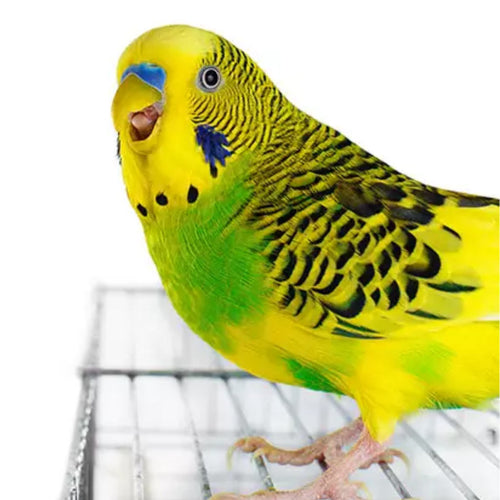
There is no guarantee of a talking budgie.
You will notice when your budgie is paying attention. He will perch close to you, and show an interest in your mouth. His pupils may dilate in concentration. In the cage, a bird that is sitting and chattering quietly is listening too. Try out the words you want to teach him then - he will probably pause in his chatter and listen. The familiarity of the words will soon start to get through to him. Sometimes he will close his eyes in contentment as you patiently repeat “Hello Peach!”, or whatever phrase you’ve opted for.
Brace yourself for some gentle disappointment. Some birds, even ones that tick all the boxes of young, male and finger-trained, never master talking. Others produce something approximating to the sounds you’ve been teaching, but mumble them like someone repeating foreign words with no grasp of the language they come from.
Some birds, however, will pick up this first phrase and run with it, adding many more words as the months pass. You can’t reasonably expect your budgie to rival the Guinness World Record holders with vocabularies of hundreds of words, but even a few ‘hellos’ amongst your bird’s happy chatter is very satisfying.

